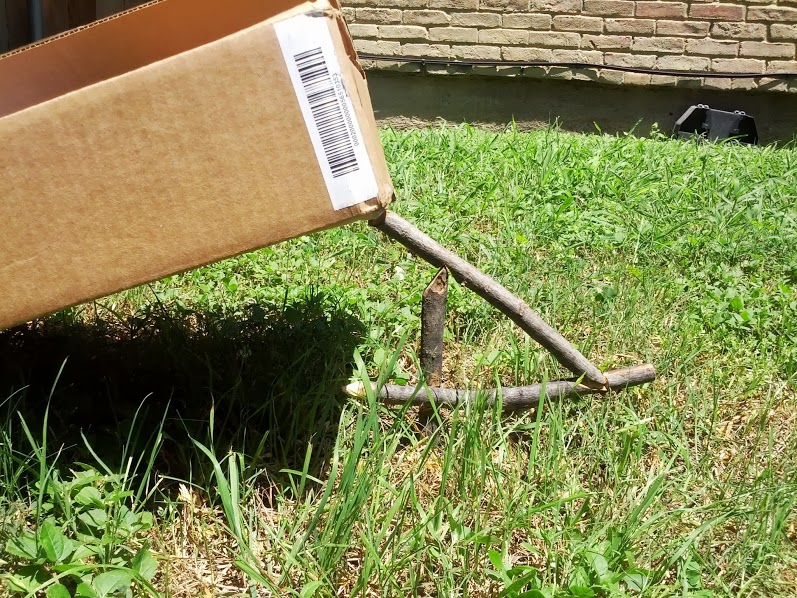When you have to hunt for survival, you want to play the odds in your favor. Creating a blind, planting a food plot, and using animal signals all give the hunter an advantage. If your purpose is to provide food for your family, you’ll want a system that works even when you’re not there. That is why you need to know how to set traps. Traps are quick, they require almost no additional gear/supplies, and if done right will yield additional food in almost any environment.
One of the most essential traps to know is the classic figure-four deadfall trap. This trap is simple and the materials to make it can be found almost anywhere.
The figure-four deadfall trap requires:
• A heavy deadfall, such as a rock or log
• A stick about 1.5 feet long and as straight as you can find
• A knife
• Bait
Once you’ve collected your supplies, you need to find a good spot to place the trap. The best places are those that are naturally visited by small game. Look for game trails or by water sources. Take care not to disturb too much of the surrounding area. Animals know if their normal habitats have been messed with.
Setting up the Figure-Four Deadfall Trap
The first step is to prep the sticks. Break the stick into three pieces of about 6–8 inches in length.

For the trap, each stick will serve a different role in the construction.
• Support Stick: To hold up the deadfall
• Trigger Stick: The part that holds the figure-four together, and also brings it all down
• Bait Stick: The part that initiates the trigger stick
Support Stick
Now you’ll need to do a little whittling. Your support stick will need a tapered tip.

Trigger Stick
Your trigger stick will need a 7-notch in it, for the support stick. The trigger stick will also have a tapered end.
Bait Stick
The bait stick will have a pointed tip on one end, then a 7-notch for the trigger stick and a square notch in the middle, where it intersects with the support stick. Your bait will go on the pointy end.


The idea is that the pieces will fit together like this:
Then the deadfall will balance on top of the trigger stick. I’m using a weighted box as my deadfall:
With the weight of the deadfall, and where each stick intersects, the overall tension should keep the trap upright (although some tweaking may be required). When an animal comes to nibble on the bait stick, it will dislodge the bait stick, causing the entire support structure to collapse, and dropping the deadfall on the animal.
To be effective, you will want to set approximately ten different figure-four deadfall traps. The more you set, the better your chances to catch a meal. Be sure to check your traps twice a day. You don’t want a bigger animal taking your hard-earned meal. The dead fall may kill the animal immediately, but it may just also trap it under the weight. Either way, be ready when you lift the dead fall for a live, and very frightened, animal to try to escape.
Tell us what you think in the comments section below.



















![The Best Deer Camp Chili [VIDEO] Deer Chili Ingredients, Tomatoes, Chili Spices](/wp-content/uploads/2015/10/Deer-Chili-Deer-Camp-Recipe-218x150.jpg)
![How to Call Elk Early in the Season [VIDEO]](/wp-content/uploads/2016/08/byers003-218x150.jpg)







![Idiots Disturb Hunter: How Would You Have Handled It? [VIDEO]](/wp-content/uploads/2015/10/DSC00110-e1474487693878-100x70.jpg)
![Albino Buck Shocked to Shed His Antlers [VIDEO]](/wp-content/uploads/2015/10/AlbinoDeer-100x70.jpg)